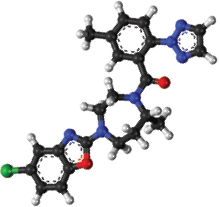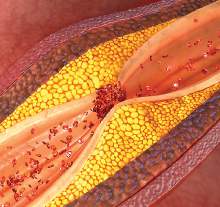Tramadol ER Reduces Symptoms of Opioid Withdrawal
Tramadol extended release (ER) is more effective than clonidine and comparable to buprenorphine in reducing symptoms of opioid withdrawal, according to a study in JAMA Psychiatry.
Given its lower abuse potential than other opioid agents, the study investigators from Johns Hopkins University believe tramadol ER is a promising medication for patients being treated for opioid use disorder (OUD).
A total of 103 participants (88 men) undergoing treatment for OUD were enrolled in the trial. After being stabilized with morphine, they were randomly assigned to receive daily tramadol ER, clonidine, or buprenorphine that was tapered down in dose over one week. The patients then all received placebo capsules for one more week for the post-taper phase.
Each day of the study, the clinicians and patients completed the Clinical Opiate Withdrawal Scale (COWS) and Subjective Opiate Withdrawal Scale (SOWS), respectively.
The study showed that tramadol ER was comparable to buprenorphine and superior to clonidine in reducing COWS and SOWS scores during the tapering phase. During this period, study retention was 90 percent for participants taking buprenorphine, 72 percent for those taking tramadol ER, and 66 percent for those taking clonidine. In the post-taper placebo phase, tramadol ER was as effective as clonidine and superior to buprenorphine in maintaining low withdrawal scores.
Reports of adverse events were similar across the treatment groups.
Older Chimpanzees Show Hallmarks of Alzheimer’s
A study in Neurobiology of Aging suggests that aged chimpanzees develop brain pathologies that are similar to those seen in the brains of people with early Alzheimer’s disease.
However, the neuronal damage in the samples were not linked with changes in the behavior of the animals late in life, the study authors cautioned. To date, there has been no evidence to suggest chimpanzees experience the severe dementia late in life, as is seen in humans.
A team led by researchers at Kent State University analyzed the brains of 20 chimps that had lived between 37 and 62 years of age, with a focus on regions affected by Alzheimer’s such as the hippocampus.
All 20 samples contained “pre-tangles” of the Alzheimer’s-associated tau protein, while four brains had evidence of both neurofibrillary tau tangles and amyloid-beta (Aβ) plaques. There was also a strong correlation between a chimpanzee’s age and the degree of plaques and tangles.
Unlike in humans, though, the investigators found a large amount of Aβ deposits in the blood vessels of these brains. This finding suggests that amyloid build-up in the brain’s microvasculature precedes plaque formation in chimpanzees. Such differences might help researchers better understand how and why humans develop Alzheimer’s or other dementias, the researchers said.
Suvorexant May Protect Against Delirium
Suvorexant, a selective orexin receptor antagonist recently approved by the Food and Drug Administration for the treatment of insomnia, may help protect against delirium in elderly patients admitted for acute care, reports a study in the Journal of Clinical Psychiatry.
Researchers in Japan randomized 72 patients aged 65 to 89 who had been admitted to intensive care units or acute wards to receive either 15 mg suvorexant or placebo once nightly for three nights. Suvorexant was chosen since there is emerging evidence linking delirium with disruptions in the circadian clock and the sleep-wake cycle.
After three days, there was a significant difference in the emergence of delirium, with 0 cases (0 percent) reported in the suvorexant group and six cases (17 percent) in the placebo group. This difference held true even after excluding patients who potentially had subsyndromal delirium at baseline.
Interestingly, there were no differences in sleep parameters between the groups. However, there were also no significant differences in adverse events, suggesting suvorexant is a safe option for preventing delirium in people at high risk.
Death Risk Higher in People With Depression, Coronary Artery Disease
People with coronary artery disease (CAD) who go on to develop depression have twice the risk of death compared with CAD patients without depression, according to researchers at the Intermountain Heart Institute in Salt Lake City. This increased risk appears to hold true whether the depression immediately followed the heart disease diagnosis or develops years later.
The analysis, which appeared in the European Heart Journal—Quality of Care & Clinical Outcomes, involved 24,137 patients who underwent angiographies to diagnose CAD. Within 10 years, 3,646 of the CAD patients were diagnosed with depression. The researchers found that these patients were on average younger, more often female, more likely to have diabetes, and much more likely to have a previous depression diagnosis.
About 40 percent of the study cohort died during the follow-up period, including 50 percent of patients with depression and 38 percent of patients without depression. The study did not explore the reasons for the elevated risk of death following the onset of depression, although the authors suggested that depression may impact how closely patients follow their cardiovascular treatment plans.
Neuronal Excitation-Inhibition Imbalance in Forebrain May Underlie ASD
The imbalance of excitatory and inhibitory signaling in the prefrontal cortex may be a contributor to autism spectrum disorder (ASD), according to an animal study in Science Translational Medicine. The study suggests that reversing this imbalance may reduce symptoms of ASD.
Researchers at Stanford University compared mice that lack the CNTNAP2 gene with normal mice. CNTNAP2-deficient mice display several autistic-like traits such as hyperactivity and reduced social behavior. These mice also have a shortage of inhibitory nerve cells known as parvalbumin (PV) neurons.
The researchers discovered that in normal mice, PV neurons become more excited during social interactions with other mice compared with interactions with new objects, but this difference did not occur in CNTNAP2-deficient mice.
By altering the signaling output in CNTNAP2-deficient mice—either by increasing the excitability of PV neurons or reducing the firing in excitatory pyramidal neurons using optogenetics—the researchers found that the mice showed improved social behavior and less hyperactivity.





